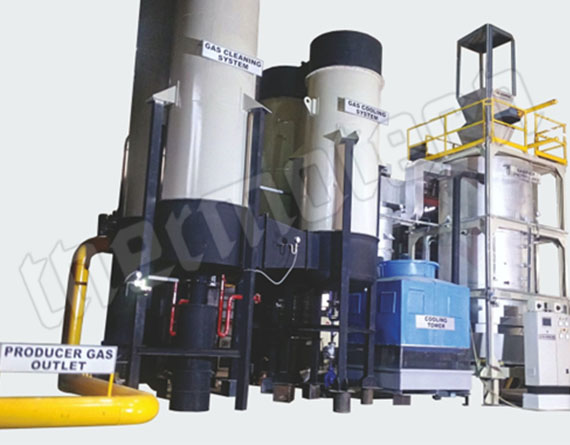Let’s Start Work
Together
Please feel free to contact us. We will get back to you with 1-2 business days. Or just call us now.

Salient Features of This Model
Gasification is the controlled partial oxidation of a carbonaceous material, and it is achieved by supplying less oxygen than the stoichiometric requirement for complete combustion. A central process between combustion (thermal degradation with excess oxygen) and pyrolysis (thermal degradation in the absence of oxygen), it proceeds at temperatures ranging between 600 and 1500 Deg C. Depending upon the process type and operating conditions, low- or medium-value producer gas (which is a combination of combustible and non-combustible gases) is created.
Gasification technology has been widely used to produce commercial fuels and chemicals. Current developments in the chemical manufacturing and petroleum refinery industries show that use of gasification facilities to produce synthesis gas will continue to rise. A striking feature of the technology is its ability to produce a reliable, high-quality syngas product that can be used for energy production or as a building block for chemical manufacturing processes.
In addition, it includes the ability to house a wide variety of gaseous, liquid, and solid feedstocks. Conventional fuels such as coal and oil, as well as low- or negative-value materials and wastes such as petroleum coke, heavy refinery residuals, secondary oil-bearing refinery materials, municipal sewage sludge, and chlorinated hydrocarbon by products have all been used successfully in gasification operations. Biomass and crop residues also have be gasified successfully. Gasification of these materials has many potential benefits over conventional options such as combustion or disposal by incineration.




